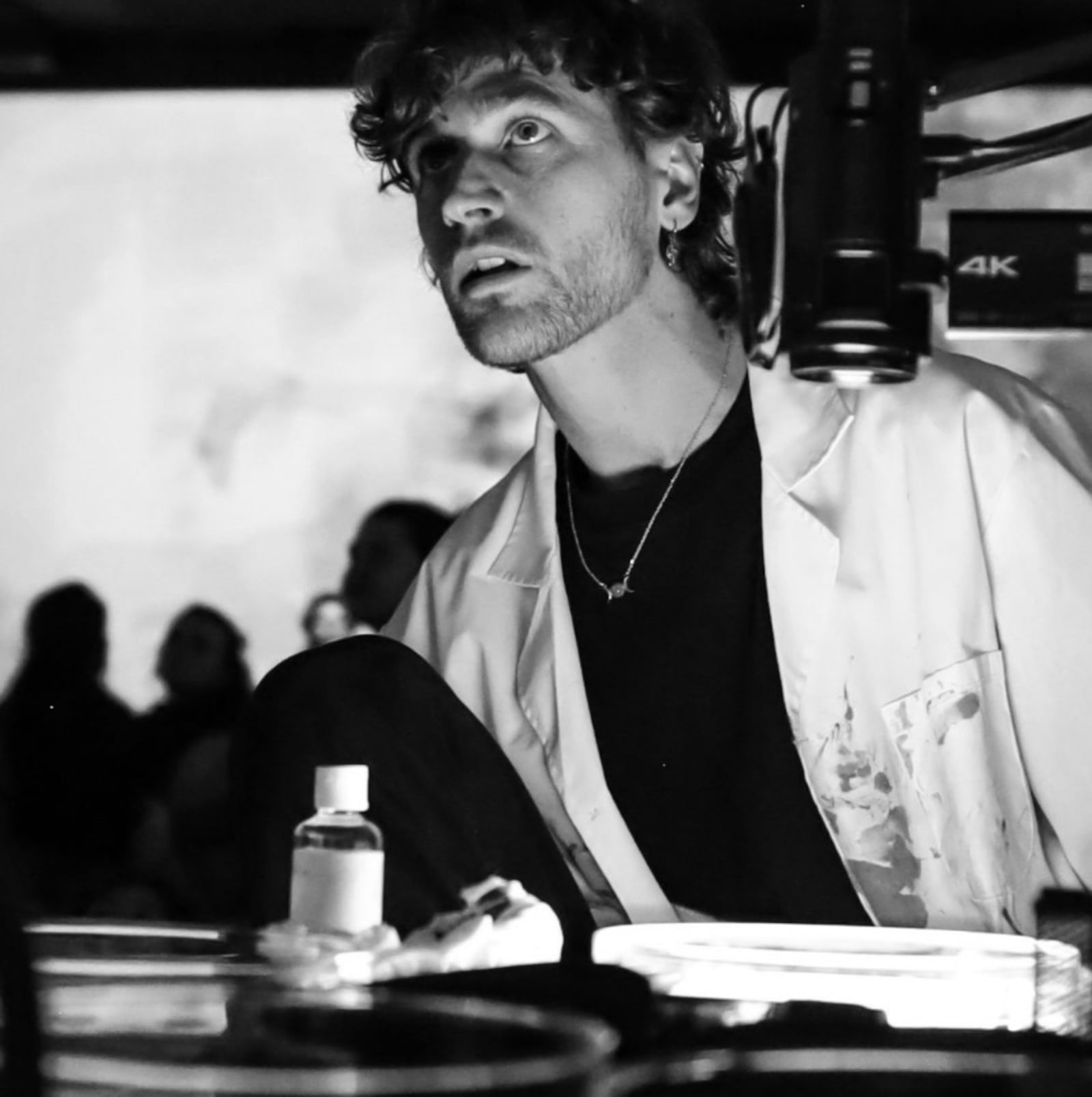artwork infos
portrait
video
00:31
2023
VIXXUALS
Toxic - Vertical
VIXXUALS
The Chamber - Vertical
VIXXUALS
Click - Vertical
VIXXUALS
Moving Forward - Vertical
VIXXUALS
FInally born - Horizontal
VIXXUALS
Blue Star - Vertical
VIXXUALS
Fractured Surface
VIXXUALS
Oizys
VIXXUALS
URBAN GENESIS - Vertical
VIXXUALS
URBAN GENESIS - Horizontal
VIXXUALS
It´s on - Horizontal
VIXXUALS
Searching for Light - Horiz...
VIXXUALS
Desintegration - Vertical
VIXXUALS
The Chamber
VIXXUALS
Spatial Dissolution
VIXXUALS
Jelly fish - Vertical
VIXXUALS
Calm down - Vertical
VIXXUALS
I see you
VIXXUALS
Pink Flamingos - Horizontal
VIXXUALS
Mundos Imaginarios - Horizo...
VIXXUALS
Maturity - Vertical
VIXXUALS
Burning out - Vertical
VIXXUALS
Oizys - Vertical
VIXXUALS
Jelly fish - Horizontal
VIXXUALS
Molecular Invasion - Horizo...
VIXXUALS
Slow motion Spectrum - Vert...
VIXXUALS
Thick Currents - Vertical
VIXXUALS
Orange Painting - Horizonta...
VIXXUALS
Moving Forward
VIXXUALS
Painting flowers - Horizont...
VIXXUALS
Hi
VIXXUALS
Metamorfosis - Horizontal
VIXXUALS
The Sun - Vertical
VIXXUALS
Curious walrus - Horizontal
VIXXUALS
Mundos Imaginarios - Vertic...
VIXXUALS
Painting flowers - Vertical
VIXXUALS
Spatial Dissolution - Verti...
VIXXUALS
Adolescence - Vertical
VIXXUALS
In Trance - Vertical
VIXXUALS
Bad Dream - Horizontal
VIXXUALS
Calm down - Horizontal
VIXXUALS
Alien flower - Horizontal
VIXXUALS
FInally born - Vertical
VIXXUALS
Searching for Light - Verti...
VIXXUALS
La Vida Adrenalina - Vertic...
VIXXUALS
Minimal Ingredients - Verti...
VIXXUALS
Pink Panther - Horizontal
VIXXUALS
The Sun - Horizontal
VIXXUALS
Black Hole - Horizontal
VIXXUALS
Blue Star
VIXXUALS
Desintegration
VIXXUALS
Slow burn - Horizontal
VIXXUALS
Encouragement
VIXXUALS
Azure Tide - Vertical
VIXXUALS
Space Cadet - Vertical
VIXXUALS
Curious walrus - Vertical
VIXXUALS
Minimal Ingredients - Horiz...
VIXXUALS
Molecular Explosion - Verti...
VIXXUALS
Viscous Flow - Vertical
VIXXUALS
Go inside - Horizontal
VIXXUALS
Toxic
VIXXUALS
Slow motion Spectrum - Hori...
VIXXUALS
Thick Currents - Horizontal
VIXXUALS
Click
VIXXUALS
Morphena - Vertical
VIXXUALS
Maturity - Horizontal
VIXXUALS
In Trance
VIXXUALS
Slow burn - Vertical
VIXXUALS
Adolescence - Horizontal
VIXXUALS
Gentle Tide
VIXXUALS
Bad Dream - Vertical
VIXXUALS
Gentle Tide - Vertical
VIXXUALS
Encouragement - Vertical
VIXXUALS
Molecular Explosion - Horiz...
VIXXUALS
Space Cadet - Horizontal
VIXXUALS
Trafic
VIXXUALS
Golden Rush
VIXXUALS
Trafic - Vertical
VIXXUALS
Stream of fire - Horizontal
VIXXUALS
Hi - Vertical
VIXXUALS
Feeling Bleu - Horizontal
VIXXUALS
Stream of fire - Vertical
VIXXUALS
I see you - Vertical
VIXXUALS
In Utero - Horizontal
VIXXUALS
Morphena - Horizontal
VIXXUALS
The Journey - Vertical
VIXXUALS
Burning out - Horizontal
VIXXUALS
La Vida Adrenalina - Horizo...
VIXXUALS
The Journey - Horizontal
VIXXUALS
Viscous Flow
VIXXUALS
Squish me - Horizontal
VIXXUALS
Go inside - Vertical
VIXXUALS
Painting - Horizontal
VIXXUALS
Alien flower - Vertical
VIXXUALS
Pink bubbles - Horizontal
VIXXUALS
In Utero - Vertical
VIXXUALS
Azure Tide
VIXXUALS (Francisco Diaz Bobillo) is an Argentine architect and visual artist based in Spain. His practice emerges from years of passionate exploration of analogue visuals, focusing on the interplay of matter, chemistry, and light in constant motion. At the heart of his work lies Liquid Light, a hypnotic discipline born in the 1960s psychedelic movement, where liquids and chemicals collide, merge, and dance, creating a sensory experience that captivates and transports viewers. VIXXUALS revives this analogue art form through fluid dynamics, embracing impermanence and the beauty of spontaneous chemical reactions. His visual compositions feel alive, unpredictable, and unrepeatable.
Drawing on his architectural background, he creates immersive live shows and installations using overhead projectors, tunnels, and dynamic water effects. One of his most notable projects took place at the Castle of Montjuïc, where light and liquid were combined to craft an immersive tunnel experience. His work invites viewers to be fully present, to embrace the ephemeral nature of the moment, and to reflect on how small shifts can lead to profound changes—a poetic reminder that life is a journey shaped by chemistry and adaptation.

Slow burn - Vertical
No CGI. Alcoholic inks intervene with chemicals and oil.
video
portrait
00:31
2023
